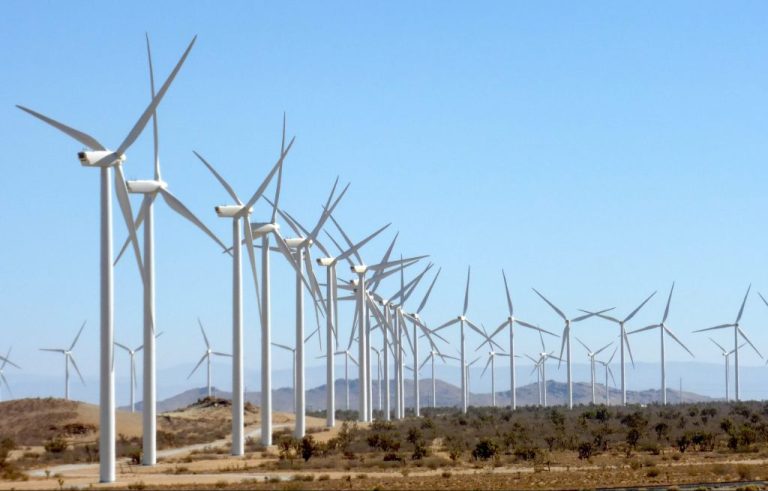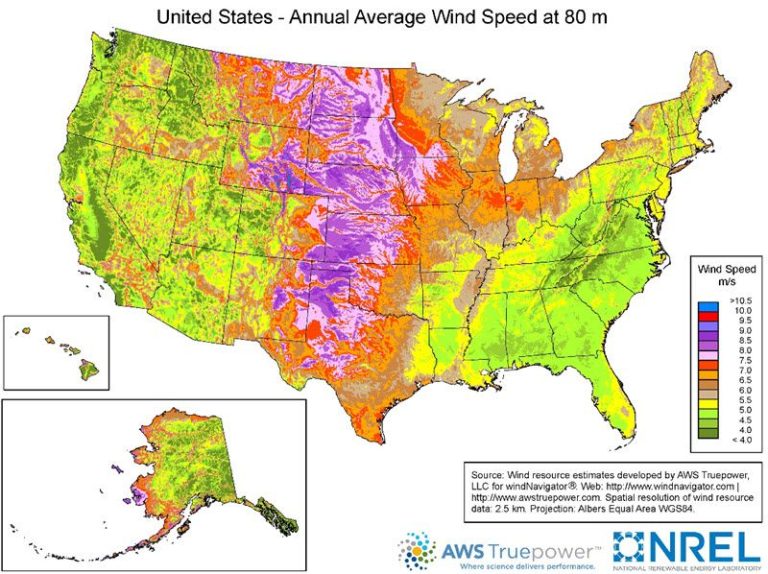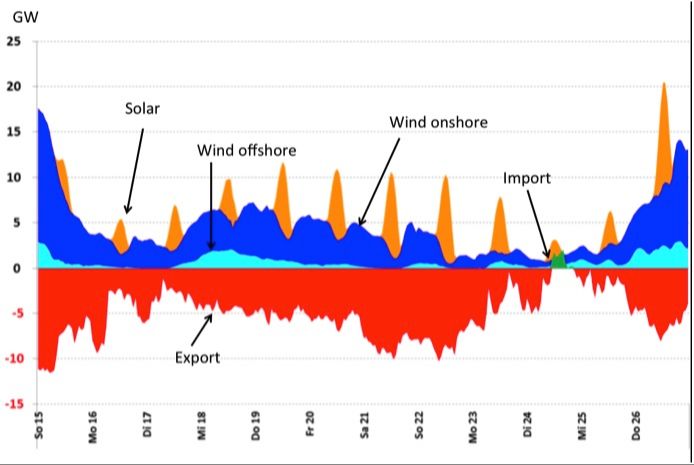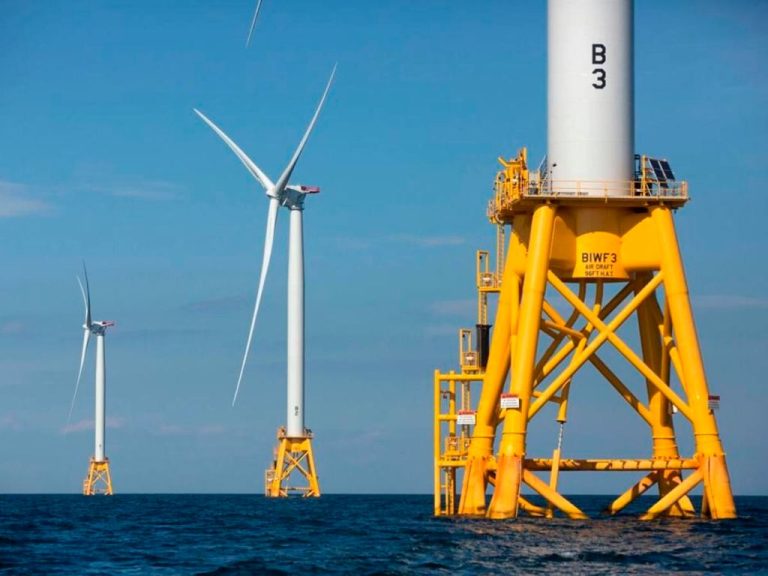What Does Wind Power Involves Converting?
What is Wind Power?
Wind power refers to the conversion of wind energy into electrical energy using wind turbines. It is a form of renewable energy that harnesses the kinetic energy generated by air flow to produce electricity without emitting carbon dioxide or pollutants.
Wind is caused by the uneven heating of the Earth’s surface by the Sun. As hot air rises, cooler air rushes to fill the void, creating winds. Wind turbines use large propeller-like blades to capture this kinetic energy of wind and convert it into rotational energy that spins a generator to create electricity.
Wind power is considered a green and sustainable energy source as it does not involve combustion of fossil fuels and does not produce greenhouse gas emissions or toxic waste. It is plentiful, renewable and causes negligible environmental impact when utilized properly. The wind resource is free and with the right location and equipment, electricity from wind energy can be captured and fed into the electrical grid.
How Wind Turbines Work
Wind turbines convert the kinetic energy in wind into mechanical power. Here’s how they work:
Wind turns blades on a wind turbine
Wind turbines have large blades, typically made of a composite material such as fiberglass. When the wind blows, it creates a lift force on the blades similar to the effect on an airplane wing. This causes the blades to turn.
Blades are connected to a drive shaft
As the blades spin, they turn a shaft inside the nacelle (the enclosure on top of the tower). This is called the drive shaft.
Drive shaft spins a generator to produce electricity
The drive shaft connects to a gear box within the nacelle which speeds up the rotation. This rotational energy spins magnets within coils of wire in the generator to produce electricity.
So in summary, the wind turns the turbine blades, which spin a drive shaft and generator to convert the wind’s kinetic energy into electrical energy.
Wind Power Conversions
Wind energy is converted into mechanical power by wind turbines. Wind turbines use blades that are designed to capture the kinetic energy of the wind. When the wind blows over the blades, they experience lift and the rotor turns. This rotational motion is converted into mechanical power through the drive shaft.
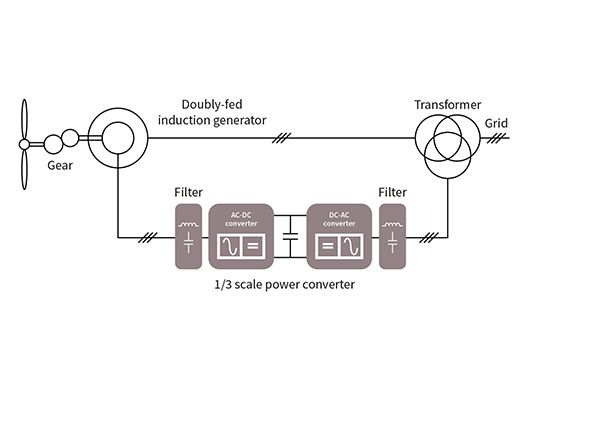
The drive shaft is connected to an electrical generator inside the wind turbine nacelle (housing). As the shaft turns, it spins magnets inside coils of wire, generating electricity. In this way, the mechanical power from the spinning turbine blades is converted into electrical power by the generator.
The electricity that’s generated can then be fed into transmission lines to be distributed and utilized. Power converters and transformers help adjust the voltage for transmission and prepare it for residential or commercial uses.
Advantages of Wind Power
Wind power offers several key advantages that make it an attractive renewable energy source:
Renewable and abundant – Wind is a naturally occurring and constantly replenished resource, making it a sustainable long-term energy solution. Global wind resources are enormous and able to supply more than enough energy for global demand.
Produces no greenhouse gas emissions – Wind turbines produce energy without emitting harmful greenhouse gases associated with climate change. Switching to wind power over fossil fuels significantly reduces environmental impact.
Cost competitive with fossil fuels – The cost of wind power has declined dramatically in recent decades to become very cost competitive with traditional power sources like coal and natural gas. Wind farms can provide affordable electricity for consumers.
Supports local jobs and economy – Constructing wind farms, manufacturing turbines, and maintaining the systems requires workers, creating long-term employment opportunities. Wind energy investments and operations support local economies.
Disadvantages of Wind Power
While wind power has many benefits, there are also some potential drawbacks to consider:
Intermittent production based on wind: Wind turbines produce energy only when the wind is blowing within the right speed range. Wind power is variable and intermittent, so it can’t be dispatched on demand. Additional sources of power or energy storage are needed to smooth out the variability.
Large land footprint required: Onshore wind farms require large areas of open land, as much as 60 acres per megawatt of installed capacity. The turbines, access roads and other infrastructure can disturb landscapes and habitats.
Potential impacts on birds and wildlife: Wind turbines can pose threats to flying birds and bats through collisions. Turbine placement should avoid major migration paths and other areas of importance to wildlife. Offshore wind farms also need to consider marine life impacts.
Onshore vs Offshore Wind
Wind farms are classified as either onshore or offshore, depending on where they are located. Onshore wind farms are located on land, while offshore wind farms are located in bodies of water, usually oceans, lakes or rivers. There are advantages and disadvantages to both onshore and offshore wind farms.
Onshore wind farms have lower construction costs because the turbines are installed on the ground or on towers on land. They are also easier to access for maintenance. However, onshore wind speeds are often lower than offshore, resulting in lower energy production. There are more restrictions on where onshore turbines can be located due to regulations, land availability, and public concerns about noise and visual impacts.
Offshore wind farms benefit from higher wind speeds over water and fewer location restrictions. But they have significantly higher construction and maintenance costs due to the logistics of transporting and installing turbines offshore. Offshore turbines are also more exposed to corrosion from the marine environment. Overall, offshore wind energy typically costs 20-50% more per kWh than onshore wind.
When evaluating locations for new wind farms, developers have to weigh the tradeoffs of onshore versus offshore installations in terms of costs, production potential, and regulatory restrictions. The optimal wind farm type depends on the geographic location and resources available.
Wind Power Capacity
Global installed wind power capacity has increased rapidly over the past decade, from 74 GW in 2006 to over 743 GW by the end of 2021. In 2021 alone, 93 GW of new wind power capacity was added globally. The regions with the highest installed capacities are Asia, Europe and North America.
China leads the world with over 350 GW of installed capacity, representing over a third of the global total. The United States ranks second with over 135 GW. Other top countries include Germany, India, Spain, the UK and France with over 60 GW each of installed wind power.
The outlook for growth remains strong, with the Global Wind Energy Council (GWEC) projecting the global wind power market to reach over 2,000 GW by 2030. Key drivers include technology improvements, cost reductions, energy security and climate change concerns. Offshore wind in particular is seeing rapid growth, with Europe leading in installed offshore capacity. Floating offshore wind technology is an emerging trend that will unlock vast potential wind resources.
Top Wind Power Countries
China, the United States, and Germany lead the world in installed wind power capacity. As of 2020, China had over 285 GW of wind power capacity, accounting for over one-third of the global total. The United States ranked second with over 122 GW of capacity. Germany came in third with nearly 63 GW.
While developed countries have dominated wind power adoption so far, emerging economies are rapidly expanding their wind power portfolios. India added the third most wind power capacity of any country in 2020, reaching nearly 38 GW. Other developing nations seeing strong growth include Brazil, Mexico, Turkey and Vietnam.
Government policies continue to drive wind power adoption worldwide. Over 120 countries now have some type of renewable energy policy or target in place. Feed-in tariffs, renewable portfolio standards, tax credits and other incentives help make wind power investment financially viable. As the cost of wind power falls, markets increasingly drive installations, but policy support remains key for nurturing growth.
Wind Power in the Energy Mix
Wind power plays an increasingly vital role in the global renewable energy mix. As of 2020, wind accounted for over 10% of total global electricity generation. Many countries now get a substantial portion of their electricity from wind power, including Denmark at 47%, Ireland at 33%, and Germany at 27%.
Wind complements other renewable sources like solar PV. Wind often blows more strongly at night when solar is unavailable. Wind and solar can work together to provide more consistent clean energy. Countries with both significant wind and solar capacity can rely on these sources for a large share of their total electricity.
The variability of wind can be balanced by flexible generators like hydropower and natural gas, along with grid integration technologies like strong transmission networks, demand response, and energy storage. With the right technologies and policies, some studies show wind and solar could make up 50% or more of generation. As renewable penetration increases, wind will likely play an integral role in decarbonizing the global energy system.
Future of Wind Power
The future looks bright for wind power, with continued growth expected. Cost reductions remain a key focus, as wind power aims to become even more competitive with fossil fuels. Offshore wind farms and larger turbines promise greater energy yields. However overcoming remaining challenges around intermittent output and land constraints will be crucial.
Experts anticipate the costs of wind power to keep falling, as technology improves and the industry expands. Building larger turbines and wind farms benefits from economies of scale. And as offshore wind ramps up, costs reductions may mirror the steep drops seen already in onshore wind. This would further close the cost gap with traditional energy sources.
Offshore wind is a major growth area, aided by the stronger and more consistent winds available at sea. Floating wind turbines are also being developed to access superior wind resources further offshore. The power capacity of wind turbines also continues to increase with larger models emerging. Taller towers and longer blades provide access to steadier and stronger winds, boosting energy output.
However, integrating rising shares of intermittent wind power into the grid remains a key challenge. Improved forecasting and battery storage solutions can help overcome this hurdle. Wind power also faces land constraints in densely populated areas. Innovations in distributed wind systems may provide local solutions. Floating offshore wind can also unlock vast untapped resources. Overall the future potential for wind power remains high.

